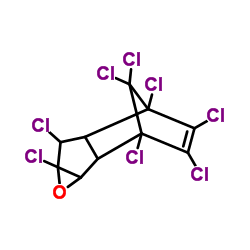| Structure | Name/CAS No. | Articles |
|---|---|---|
![Heptachlor epoxide [Isomer B] Structure](https://image.chemsrc.com/caspic/004/1024-57-3.png) |
Heptachlor epoxide [Isomer B]
CAS:1024-57-3 |
|
 |
OXYCHLORDANE
CAS:27304-13-8 |